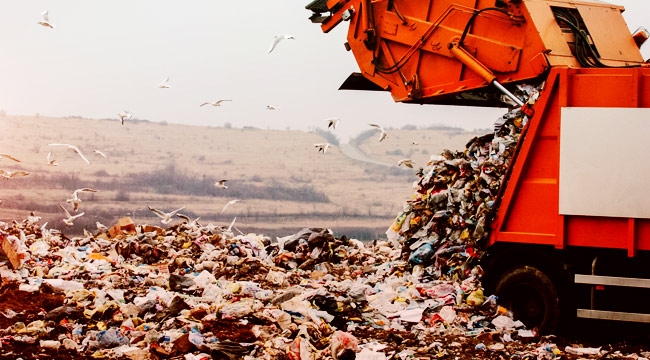
If you compared eco-minded living to a video game, going zero waste is a bit like the final boss fight. It’s the kind of achievement that takes a good deal of work in pulling off and often comes with certain frustrations and setbacks. If you can manage to do it (or even get close), however, it means you’ve accomplished a kind of gold-standard in environmentally-friendly living. It feels good knowing you’re not contributing quite so much to the garbage patch that’s three times the size of France currently floating in the Pacific Ocean.
Obviously, there’s no one solution for decreasing your waste. The trash we throw away doesn’t all come from one place — it demands attention across the board. There are a few easy tricks to slicing your eco-impact, though, and we’ve picked some of the most manageable ones to lay out below. Here’s a look at what you can do that will help move you and your household in the waste free direction before Earth Day on Aprill 22.
Reusing (And Reusable) Containers
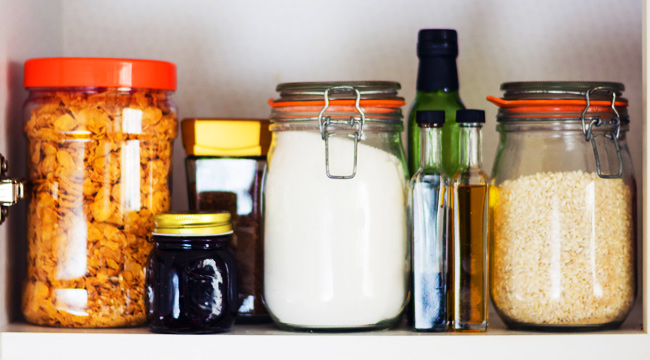
Packing up your reusable grocery bags when you go shopping is a good start, but it’s not all you can do. Much of the trash we end up throwing out is packaging that comes with buying lunchmeat, cheese, coffee, and so on. Some of that excess packaging can’t be prevented, but you can dramatically reduce that type of plastic by bringing your own containers from home. Instead of picking up a pre-packaged bundle, order directly from the deli counter, and after they weigh your purchase, have them put your food in one of your containers. The same goes if you buy bulk coffee beans, nuts, or grains.
Yes, this complicates your shopping trip down before you even get to the store (the clerk should let you pre-weigh your jars so that you’re not paying for their weight), but it will lower the amount of waste that ends up in a landfill somewhere. There’s an added bonus that comes with using glass containers, particularly mason jars, for food storage — your shelves will resemble something between a quaint farmhouse and the lair of an over-prepared survivalist.
Picking The Right Packaging
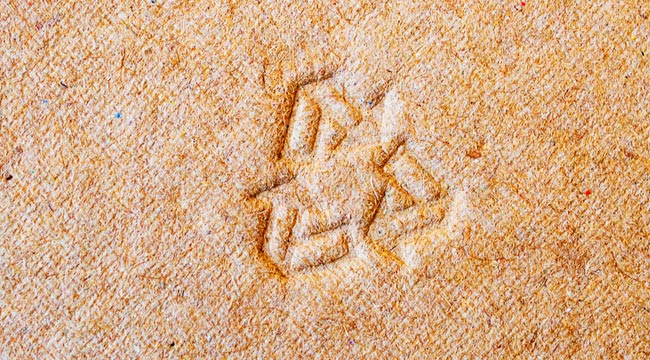
The big takeaway here is knowing that just because something’s made of a recyclable material, it doesn’t necessarily mean that its recyclable itself. If you’re like me, you might have a sort of built-in reflex to thinking cardboard is the go-to choice for being better for the environment than a plastic container. However, the reality is that cardboard food containers are often coated in wax or plastic, making them impossible to recycle. Which means it ends up being just more fodder for your trash.
The best way to pick the right packaging depends on the material. If it’s plastic, there’s a code on the back of the packaging that’ll indicate whether it’s recyclable or not. Greenopedia also has a helpful breakdown of how to read them. If it’s another material, the package should indicate whether or not you can recycle it, but it’ll take a little double-checking on your end before you throw it in your cart. Also, remember that if something says it’s made from recycled material, that doesn’t necessarily mean it can be recycled again when you’re done with it.
Bottom line: You have to be savvy and check the packages of the things you buy. Yes, it’s a little extra effort but that’ll be well worth it to help save the planet.
Getting Rid Of Food Waste
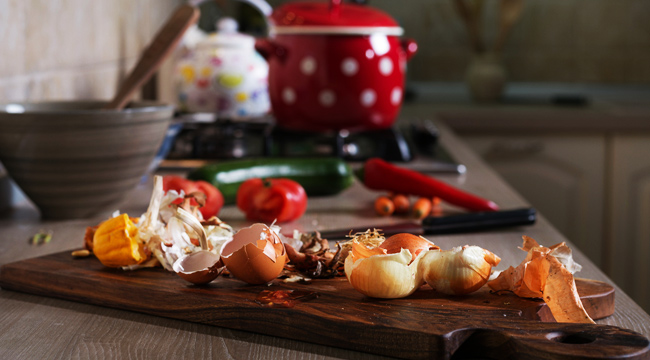
One of our biggest issues when it comes to trash is how to tackle food waste. It’s estimated that the average American throws out upwards of 33 pounds of food per week. Not all of it is necessarily edible, but throwing away apple cores and orange peels does mean that they end up in a landfill. Worse: they turn into methane gas when they start to decompose.
The best way around this is to start composting. It’s the best, most natural way to break down food and other organic matter. And as an added bonus, it leaves behind nutrient-rich soil afterward. If you have a yard, getting (or making) some kind of outdoor composting bin shouldn’t be too daunting a task. However, if you don’t have a yard, there are quite a few indoor bins available. Click around online to find out which one will work best for you in your own space.
In addition to all your veggie scraps, egg shells, and tea leaves, you can also compost things like shredded paper, cardboard, and coffee grounds. Of course, there are some limitations. Things like meat (raw or cooked), glossy magazine paper, and pet waste can’t be composted for a whole range of reasons, so those items will have to stay in the trash for now. Also, beyond composting, your vegetable scraps can be used to make a vegetable broth, which will give your scraps a second chance at becoming food.
Workarounds For Water Filters
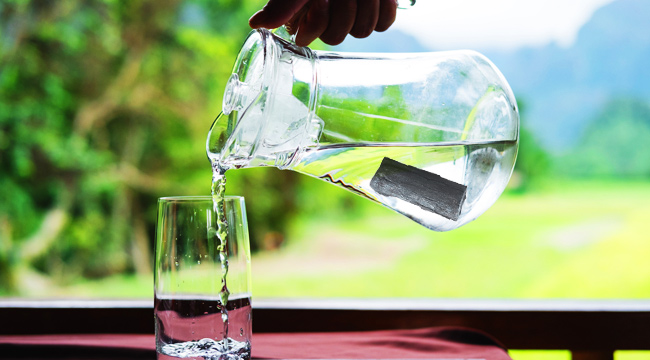
This is, honestly, one of the stranger and smaller issues you’re going to deal with in the quest to go green. But it is a convo starter.
While we all love the crisp, clear taste of filtered water, the filters themselves can’t be recycled once they’ve been used up, nor can the packaging they come in. Depending on your situation, you might be able to get a filter that’s built directly into the faucet, but there is a simpler, more ecologically-friendly solution: Put a piece of activated charcoal in the bottom of a water pitcher.
Sure, it looks weird, but it’s a technique that’s been around for centuries. Once the pitcher is filled up with water, you just wait about 10 minutes before the charcoal starts to filter. Even better: that single piece of charcoal at the bottom should last about six months and will be a terrific conversation starter the next time you have friends over.
Finding Your Own Solutions
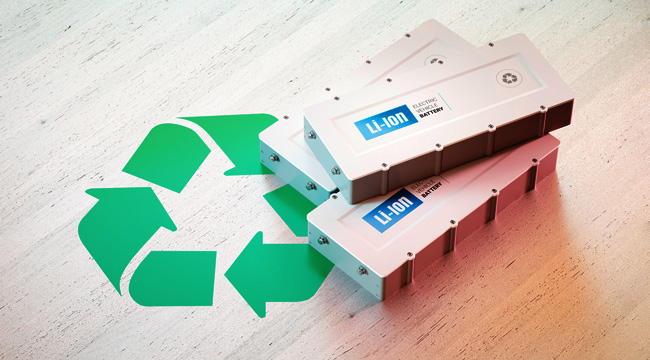
The most effective way to really bring down the amount of trash you take to the curb every week is simply to watch what you’re throwing away. Then, come up with feasible solutions to reduce or eliminate those items from your refuse. If you’re seeing a lot of fast food wrappers, try and seek out options that use recyclable or biodegradable options. Or you might even try weaning yourself off of the drive-thru in favor of sit-down restaurants that use real plates and silverware.
If you’re noticing a lot of batteries, invest in a rechargeable unit to keep those little canisters of zinc and manganese in use instead of tossing them once they’ve died. You can also look into other options, like using gadgets that come with a built-in rechargeable lithium battery. With a little effort, you can replace much of your trash-creating routine to be more sustainable in the long run.
Ultimately, going zero waste isn’t something that you work toward and then move on from (at least… it shouldn’t be). As you develop eco-minded habits, it’s important they keep evolving as your own household’s needs change. In a perfect world, these are things that you’ll incorporate into your lifestyle from now on.
It’s also important to remember that it’s easy to get frustrated. Even months of working toward a zero waste goal can still leave you taking out trash at the end of every week — and that’s okay. Frankly speaking, there’s not a clear-cut solution for every item you throw out right now. Keep in mind that this is one of those “marathon, not a sprint” situations.
Still, habits like these are nonetheless important as we continue into the 21st century, and despite the setbacks you’re sure to encounter, going zero waste can have a real, positive impact on our planet.






